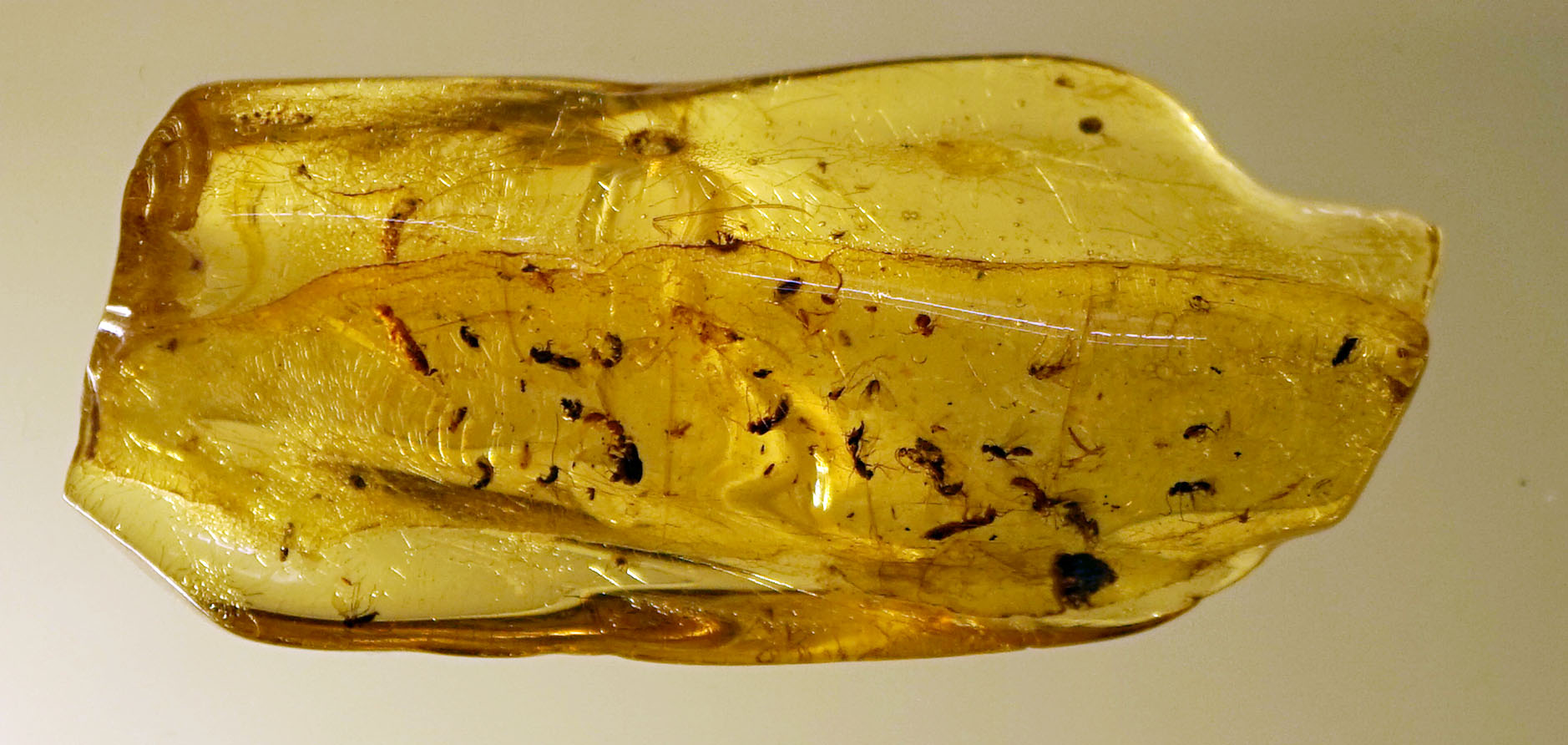
In something that sounds oddly similar to the plotline from Jurassic Park, scientists have found a remarkably preserved baby snake frozen in time encapsulated by amber in Myanmar.
According to the journal, Science Advances (the article can be found here), scientists believe that this snake fossil is 99 million years old, making this discovery the first known Mesozoic snake to be discovered in a forested environment.
This new prehistoric snake was named Xiaophis myanmarensis. It is believed that this new snake is more than likely closely related to modern-day snakes found in Asia, but scientists simply do not know just yet. This is the first time we have seen a fossilized snake of this sort, so there is a lot we have to learn about this little guy.
What scientists believe is that this snake is a newborn and possibly had just come out of its shell when it became encapsulated by amber, or it had been out for a little bit and got caught up in some amber. Either way, scientists know that this snake is a newborn, so it was caught very early on in its life. The video below will give you a great idea of the snake’s size and what the amber fully looks like.
Found along with this baby snake was another piece of amber containing what scientists believe is some skin from a snake. Scientists believe that this is probably from an adult Xiaophis, but they aren’t positive on that just yet. The skin has bands of light and dark bands on the scales. If the skin is, in fact, from a snake then it will actually be the first time we’ve seen a piece of a snake’s skin found in amber. However, it is possible that this skin can belong to another animal, but scientists believe that the shape and arrangement of the scales point to the idea that it is a piece of a snake’s skin.
Michael Caldwell, a fossil reptile expert with the University of Alberta in Canada and a co-author of the article, had this to say about the skin, “The scales are organized as one would expect in a snake or a lizard, in diagonal rows. In this particular specimen, part of what makes it more snake-like is the diamond shape of the scales. Most lizards don’t show that same kind of diamond shape and pattern of overlap in the scales”.
What is Amber?
If you have ever seen Jurassic Park you might know that amber can amber can preserve fossils extremely well (but unlike in Jurassic Park, in the real world DNA cannot be extracted to make clones). Over the years scientists have uncovered many well-preserved fossils of different animals, insects, and different plants that had gotten caught up in amber millions of years ago. This has allowed us to get an idea of what the past truly looked like.
So, just what is amber? Amber is simply fossilized tree resin and has always been valued as a gemstone, even in the Neolithic times (which was around 10,000 BC). It has traditionally been used in jewelry and even in medicine, but for our purposes, we are going to look at amber for it’s archaeological and geological significance.
The earliest amber, that we have come discovered at least, dates back to the Carboniferous period, which occurred over 320 million years ago. Scientists believe that this amber was created by plants instead of trees. Amber doesn’t become prevalent until the early Cretaceous period, about 150 million years ago. To give you an idea of how well-preserved amber can keep fossils, the earliest known arthropods are known to be found caught in resin dates back over 230 million years ago from Lebanon.
Here are some of the most incredible finds scientists have discovered in amber:
Dinosaur Feathers
This is possibly one of the biggest discoveries scientists have found preserved in amber. This fossil is from about 99 million years ago from a young dinosaur who got its tail stuck in resin, which undoubtedly killed it. It’s somewhat sad, but it allows scientists to get a glimpse back in time to feathered dinosaurs. The tail fragment is only 1.5 inches and consists of the bones, skin, and feathers of the tail. It is believed that the dinosaur itself was only 6 inches long or so, about the size of a bird. This dinosaur was bipedal and was bird-like in that it had feathers, but that was about it for the similarities.
Oldest Arthropods Ever Found
As we mentioned above, this is another awesome find. These arthropods are about 230 million years old, making them some of the oldest arthropod fossils we’ve ever come across (if not the oldest). Each of these little guys is between two and six millimeters long, making them near invisible to the human eye. They are both gall mites, which can be traced back to the Triassic period and are still around to this day, where they can be found feeding on plants. Interestingly enough, in the 230 million years since these mites have died, today’s gall mites are still very similar and have not changed all that much.
The First Salamander Found in Amber
This little salamander had quite a tough life before losing its life to sticky tree resin almost 20 million years ago in the Caribbean (where, ironically, no salamanders live anymore). This poor little guy got into some sort of fight that ended up costing him a leg before getting stuck and succumbing to the resin. This discovery is the first salamander found in amber, and it shows scientists that salamanders once existed in the Caribbean at one point. That means that either a predator of some sort killed out salamanders on the islands or some sort of climate event happened that wiped them out. Either way, the discovery is fascinating and points to bigger mysteries the Caribbean has for scientists to answer.









